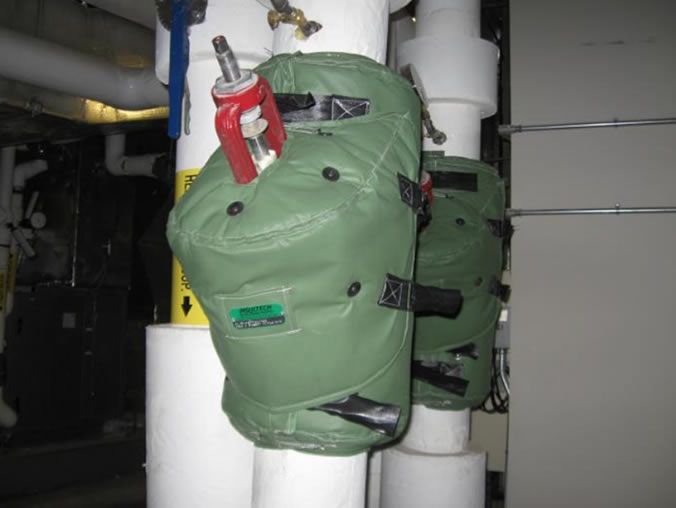For this reason, Shannon believes strongly in a detail-oriented approach to surveying for energy-saving opportunities and designing high-quality reusable insulation blankets that adhere to industry specs.
“The belief that the ‘devil is in the details’ is crucial to the success of identifying optimal thermal and safety opportunities,” said Mike Makofsky, northeast regional manager for Shannon.
Boiler plants, for instance, are where some facility owners are overlooking opportunities to insulate energy-losing components. Manways, where workers can access the boiler when performing maintenance typically are not insulated, despite reaching high temperatures.
Safety valves, while they might not conduct heat themselves, radiate energy from the flanges that attach them to the boiler. Insulating these flanges limits how much heat energy radiates away from these points. Inspection ports on boilers can bleed energy as well as pose a safety risk to workers, but frequently, facility owners leave them uncovered.
“There are inspection ports called hand holds. They’re about seven-inch diameter areas directly on the side of boilers, right at face or knee level, that are screaming,” said Makofsky. “So, you have this seven-inch diameter hole throwing out 250-degree Fahrenheit temperatures.”
Facility owners commonly overlook feed water return systems, too, particularly due to their small size and location high above a facility floor.
“Customers rarely ask about feedwater return systems,” said Makofsky. “It’s only a one-inch pipe, a couple hundred degrees, and it’s far up, so it isn’t a safety issue; they typically just let it go uninsulated. But there’s a lot of energy lost there.”
Insulation prevents components from bleeding energy, saves money for the business, and keeps workers safe. Through survey and inspection, Shannon representatives keep an eye on the details that help clients spot energy-saving opportunities and mitigate energy loss.

